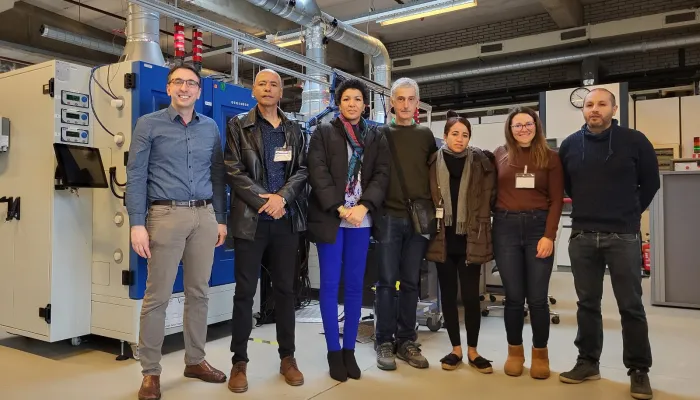6 recycling technologies to transform your waste into valuable resources
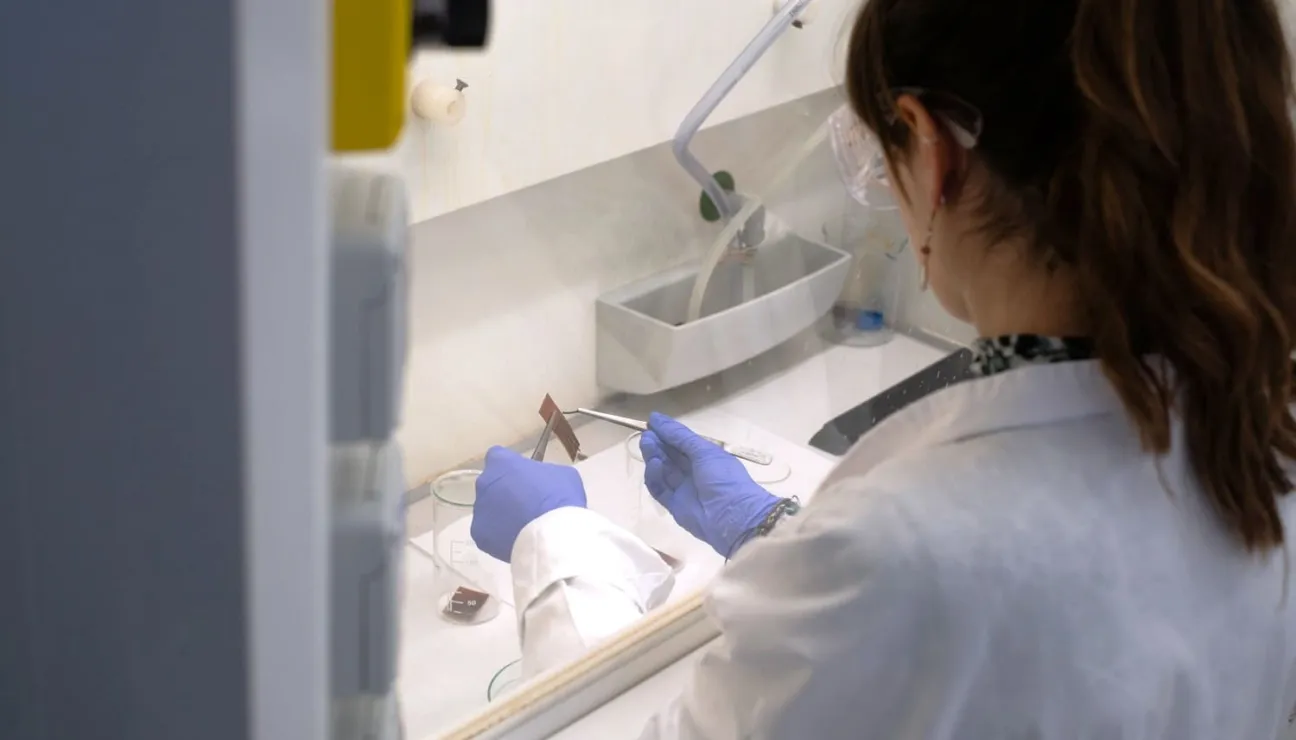
At CIRCE - Centro Tecnológico, we're committed to transforming waste into valuable resources using innovative technologies. We collaborate with international companies and consortia to develop specialized solutions that surpass traditional mechanical recycling limitations, minimizing environmental impact while promoting a circular economy model.
Currently, we're advancing technologies for recycling batteries, textiles, plastics, Electrical and Electronic Equipment Waste (EEE), wind turbine blades, and photovoltaic panels, among others. Our focus is on material recovery and reducing environmental footprint throughout the recycling process, ensuring compliance with stringent environmental regulations and advancing toward a sustainable future.
Would you like to learn more about our recycling technologies for each type of waste?
1. Thermochemical Recycling for Photovoltaic Panels
Spain's first photovoltaic park began operating in 1985. Since then, renewable energy development has surged, experiencing its first boom in the early 2000s. This means that these early parks have exceeded 20 years and are approaching the end of their lifespan. EU regulations mandate recycling equipment components, and from 2025, it will be prohibited to dispose of wind turbine blades, solar panels, or batteries in landfills.
Photovoltaic panels, whether at the end of their lifespan or damaged, undergo two complementary approaches to maximize material recovery:
- Thermal treatments to break down solar panel components, allowing the recovery of metals and other reusable materials.
- Chemical treatments to separate and purify harder-to-recover materials like silicon and precious metals.
Interested in a pioneering initiative in photovoltaic panel recycling developed with CIRCE? Check out IBERSYD's case, an Aragon-based consultancy working with CIRCE at the European Photovoltaic Recycling Center (CERFO) to tackle the challenge of large-scale solar panel recycling.
2. Microwave Technologies for Wind Turbine Blades
Wind turbine blades, made of composite materials like fiberglass and polymer resins, pose significant challenges for recycling due to their large size and complex structure. At CIRCE - Centro Tecnológico, we address this challenge using advanced recycling technologies such as solvolysis and pyrolysis, both assisted by microwaves. This combined system allows us to obtain the starting monomers from epoxy resins that make up the composite and to clean fiberglass, integrated into concrete or construction matrices, for example.
These methods facilitate effective decomposition of composites and optimize energy consumption through selective heating of specific blade components.
At CIRCE, we continue to research and develop these technologies to improve their efficiency and economic viability, ensuring widespread adoption in the industry.
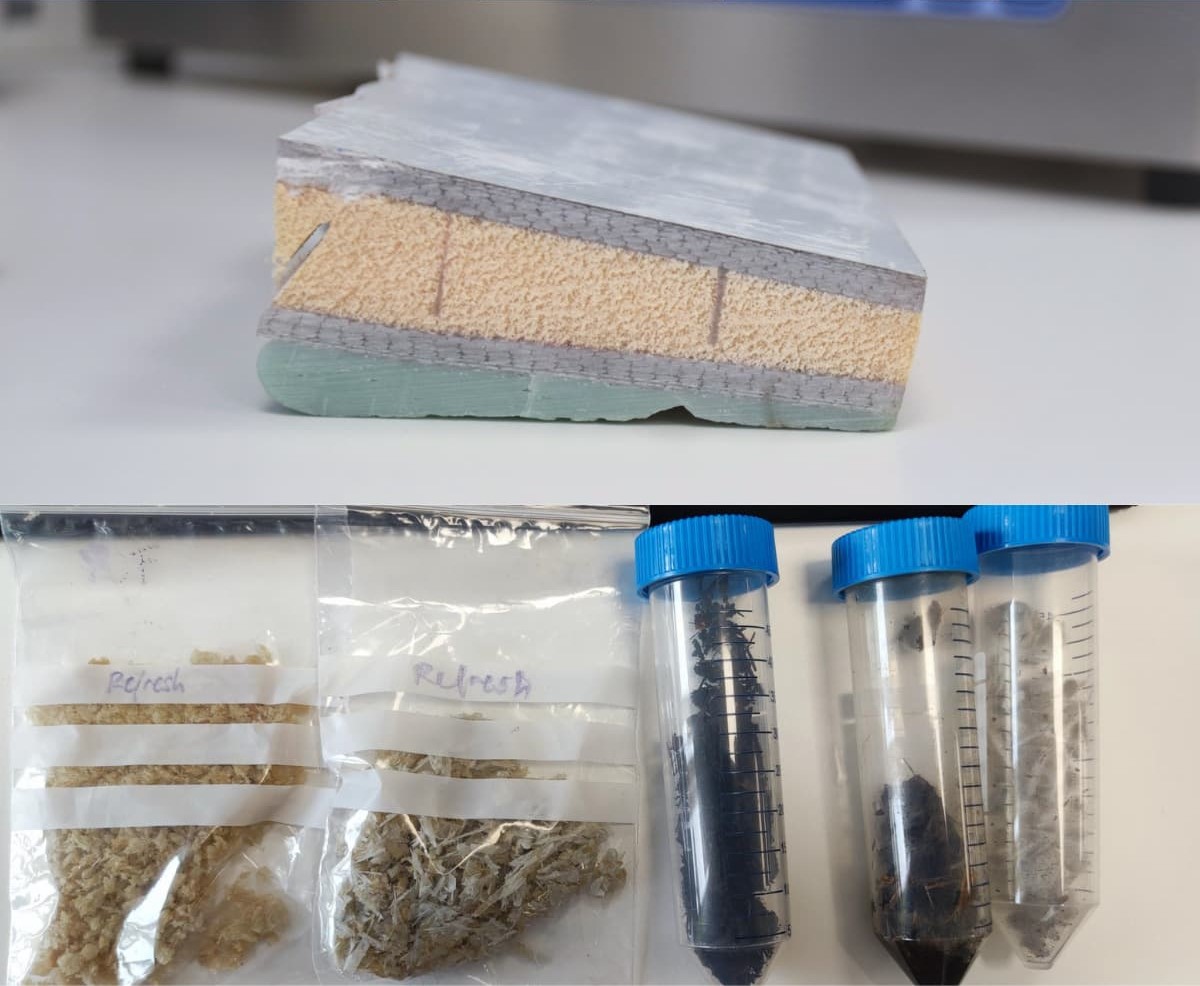
3.Microwave-Assisted Glycolysis for Textiles
Another innovative project we are working on at CIRCE is textile recycling, specifically polyester (PET). Using microwave-assisted glycolysis, textiles are broken down into their original monomers, allowing them to be reintegrated into new products. This approach not only reduces waste but also decreases the need for virgin resources.
4.Hydrometallurgy for Lithium-ion Batteries
Currently, another key focus at CIRCE is recycling batteries, especially those used in electric vehicles and electronic devices. Through hydrometallurgical processes, valuable materials like lithium and cobalt are recovered using aqueous solutions. This helps reduce dependence on mining, which is resource-intensive and often environmentally destructive.
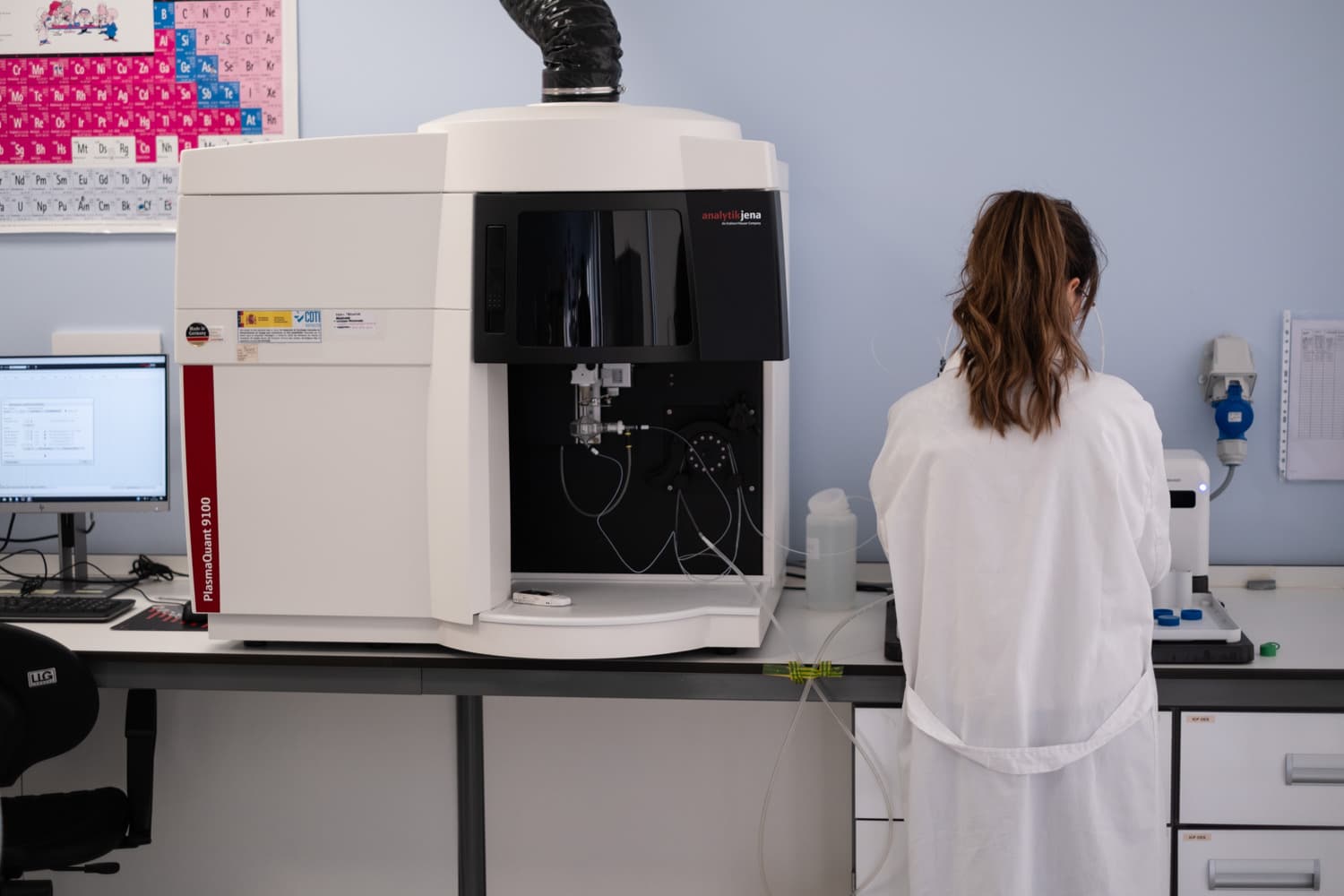
5.Green Solvolysis for Construction and Demolition Waste Composites
Green solvolysis stands out for its ability to specifically adapt to composites derived from construction and demolition waste, a significant source of solid waste traditionally challenging to recycle. This innovative technology not only facilitates the separation of valuable materials such as fibers and resins but also does so in a way that minimizes environmental impact, using milder solvents and energy-efficient processes aided by microwaves.
6.Solvolysis for Plastics
Microwave-assisted solvolysis involves using solvents to break chemical bonds in composite materials, enabling the recovery of fibers and resins that can be reused in other industrial processes or for manufacturing new products. This technology is particularly applicable to a variety of materials, including plastics.
This technology focuses on the thermal decomposition of materials in a controlled environment, resulting in the production of gases, oils, and char that can be utilized as energy sources or raw materials in other applications. In addition to its effectiveness, these technologies offer significant environmental benefits, such as reducing greenhouse gas emissions compared to conventional disposal methods like incineration or landfilling. Explore one of our research projects where we employ various valorization technologies such as gasification or enzymatic processes combined with artificial intelligence for the recycling of plastic waste.
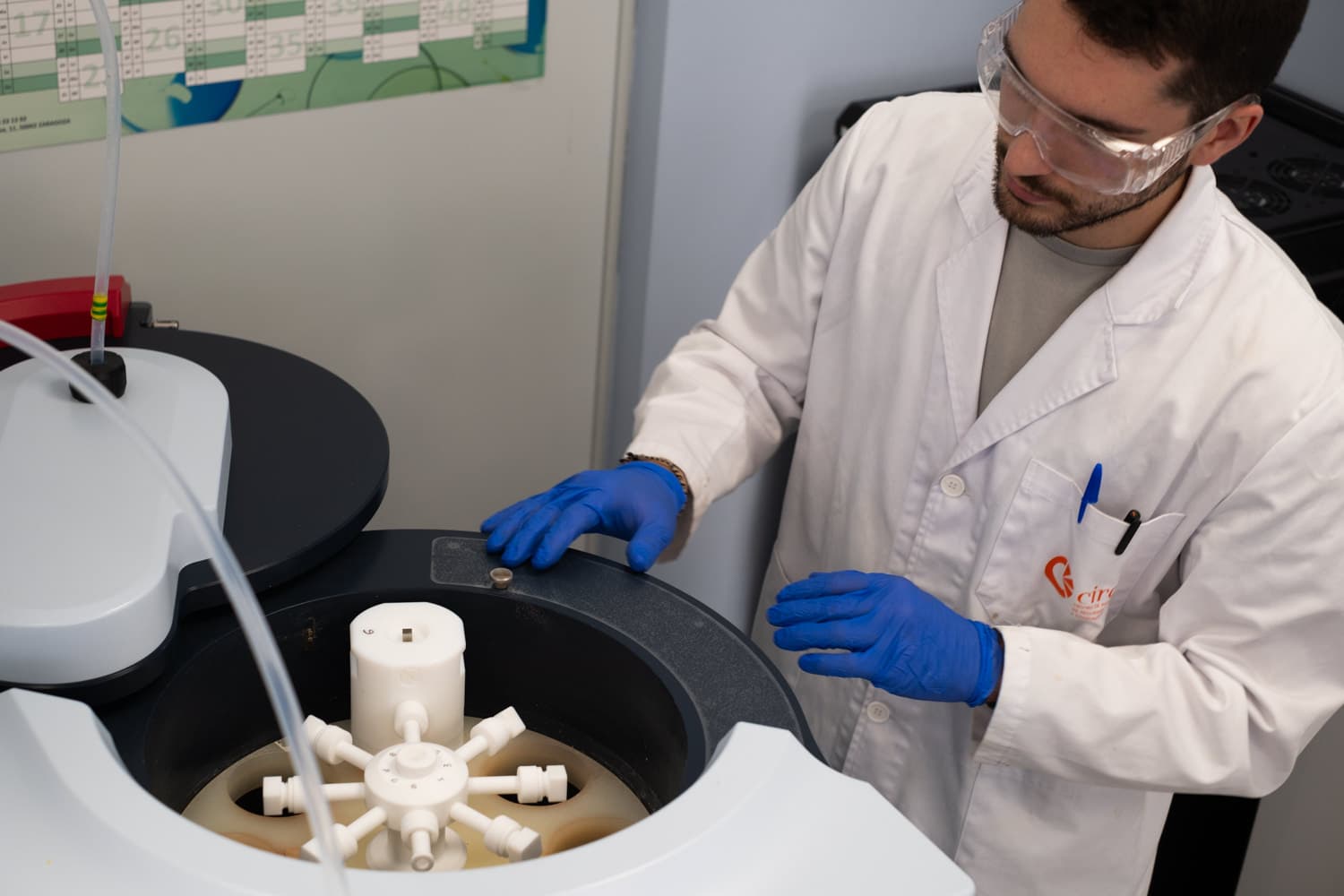
Improvements in Waste Separation through Computer Vision and AI
To enhance material recycling efficiency at CIRCE, we are also focusing on waste separation, an area where we are developing advanced computer vision and machine learning systems.
These technologies enable automatic identification and classification of waste on recycling lines, significantly improving the accuracy and efficiency of the separation process. This technological advancement is crucial for optimizing material recovery and reducing cross-contamination, ensuring resources are recycled in the most effective and sustainable manner possible.
Commitment to Sustainability and Innovation
Integral to CIRCE's recycling philosophy is the reuse of reagents in its processes. This not only enhances resource efficiency but also minimizes waste generated during recycling. By closing the loop on materials used, we make a significant contribution to the sustainability of recycling practices.
Moreover, we carefully select each technology to ensure maximum efficiency in recycling each type of waste. To achieve this, we conduct technological and economic evaluations, ensuring methods are effective in environmental terms and commercially viable. This is essential for industries to adopt these technologies, ensuring their long-term sustainable practicality.
Latest news

